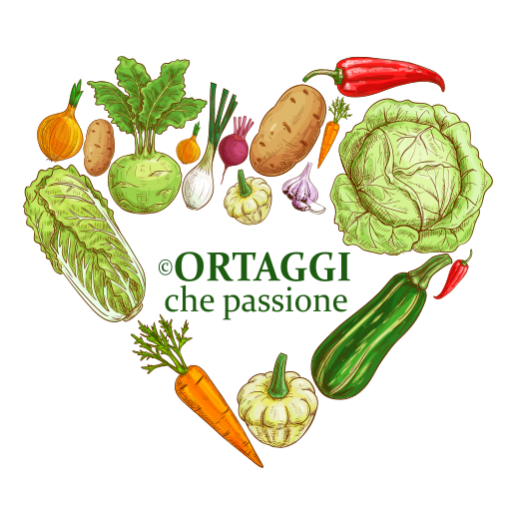The recipe for pan-fried pak choi without soy sauce is a simple-tasting side dish. This chard cabbage is a vegetable with a delicate and slightly sweet flavor, featuring crunchy and fresh notes.
What is pak choi? Bok choy is a type of Chinese cabbage belonging to the brassica family. It has dark green, crunchy leaves with white, fleshy stems.
Pak choi, how to cook it? It is widely used in Asian cuisine, in soups and stir-fries, but also raw in salads, boiled, blanched, baked, or as an ingredient to enrich soups. It can also be steamed to enhance its delicate taste.
SEASON of #pak choi (bok choy or chard cabbage) – all year round, but mainly in spring and fall. Bok choy can be grown year-round in mild climates.
RECIPES in which pak choi can replace the main vegetable
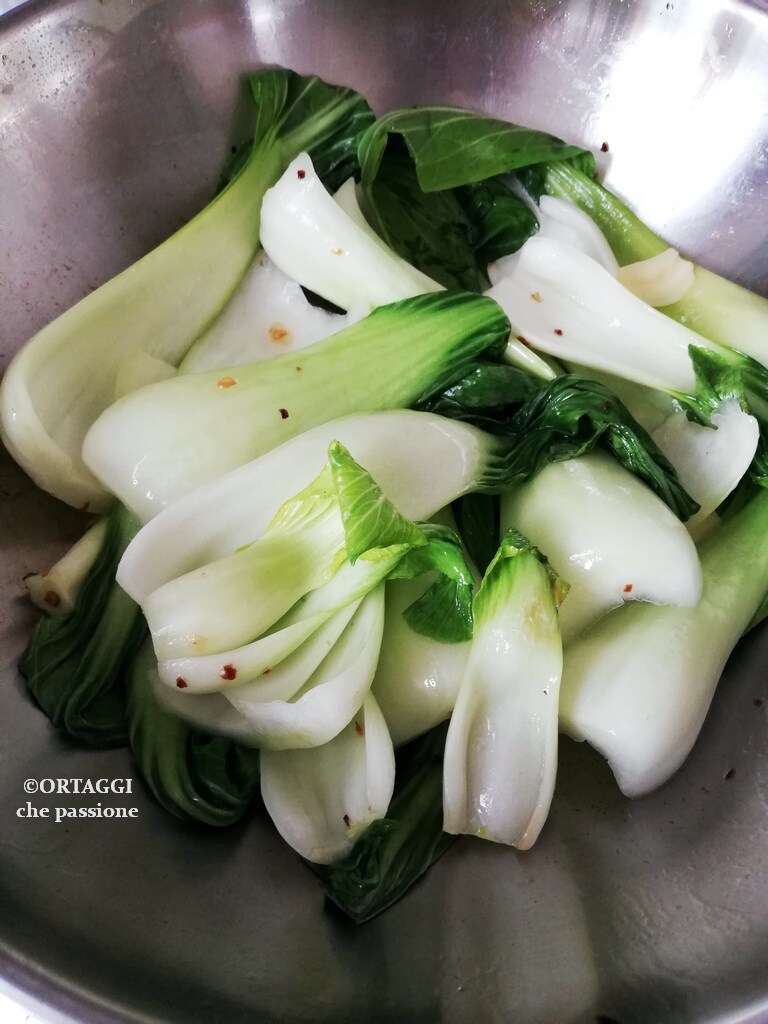
- Difficulty: Easy
- Cost: Economical
- Preparation time: 10 Minutes
- Portions: 2 People
- Cooking methods: Stove
- Cuisine: Healthy
- Seasonality: All seasons
- Energy 65.60 (Kcal)
- Carbohydrates 4.33 (g) of which sugars 2.25 (g)
- Proteins 2.89 (g)
- Fat 5.05 (g) of which saturated 0.72 (g)of which unsaturated 0.21 (g)
- Fibers 1.92 (g)
- Sodium 317.41 (mg)
Indicative values for a portion of 170 g processed in an automated way starting from the nutritional information available on the CREA* and FoodData Central** databases. It is not food and / or nutritional advice.
* CREATES Food and Nutrition Research Center: https://www.crea.gov.it/alimenti-e-nutrizione https://www.alimentinutrizione.it ** U.S. Department of Agriculture, Agricultural Research Service. FoodData Central, 2019. https://fdc.nal.usda.gov
Pan-fried Pak Choi
- 1 lb pak choi (about 1.34 oz cleaned)
- 1 drizzle extra virgin olive oil (or peanut oil)
- 2 cloves garlic (optional)
- to taste chili pepper
- to taste fine salt
Tools
- Cutting Board
- Knife
- Pan wok type
- Ladle wooden
Pan-fried Pak Choi
With the help of a knife, cut the base of the Chinese cabbage to separate all the leaves, then wash them thoroughly.
In a wok-like pan, sauté garlic and chili pepper with a drizzle of oil.
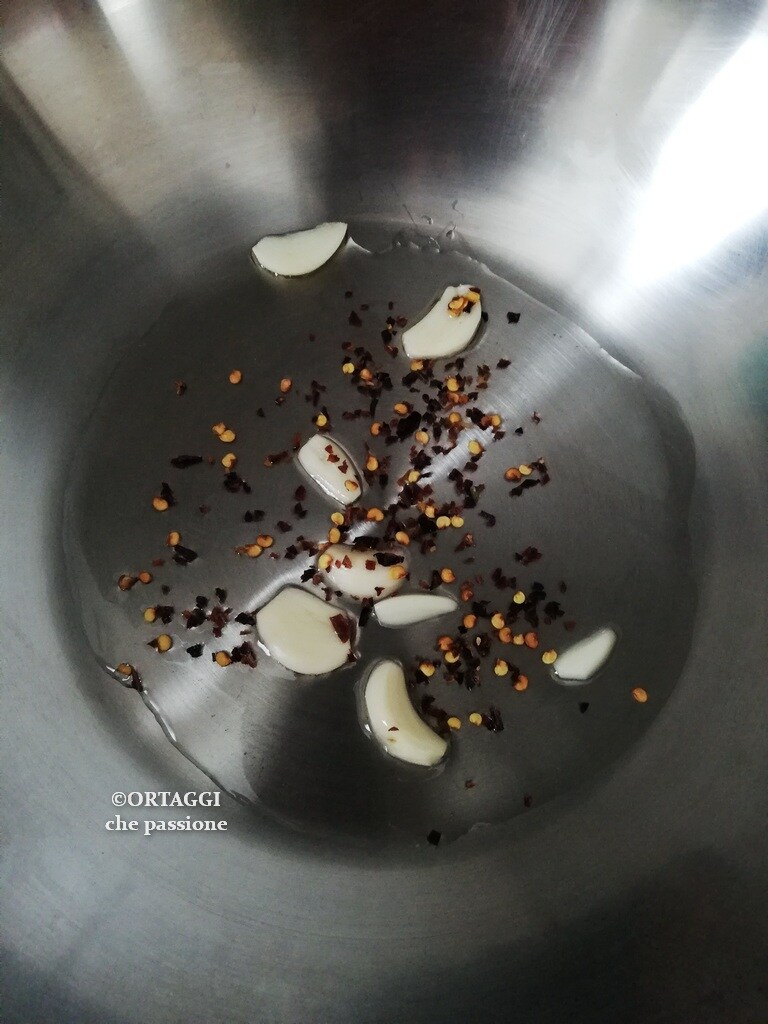
Then add the pak choi leaves and season with salt.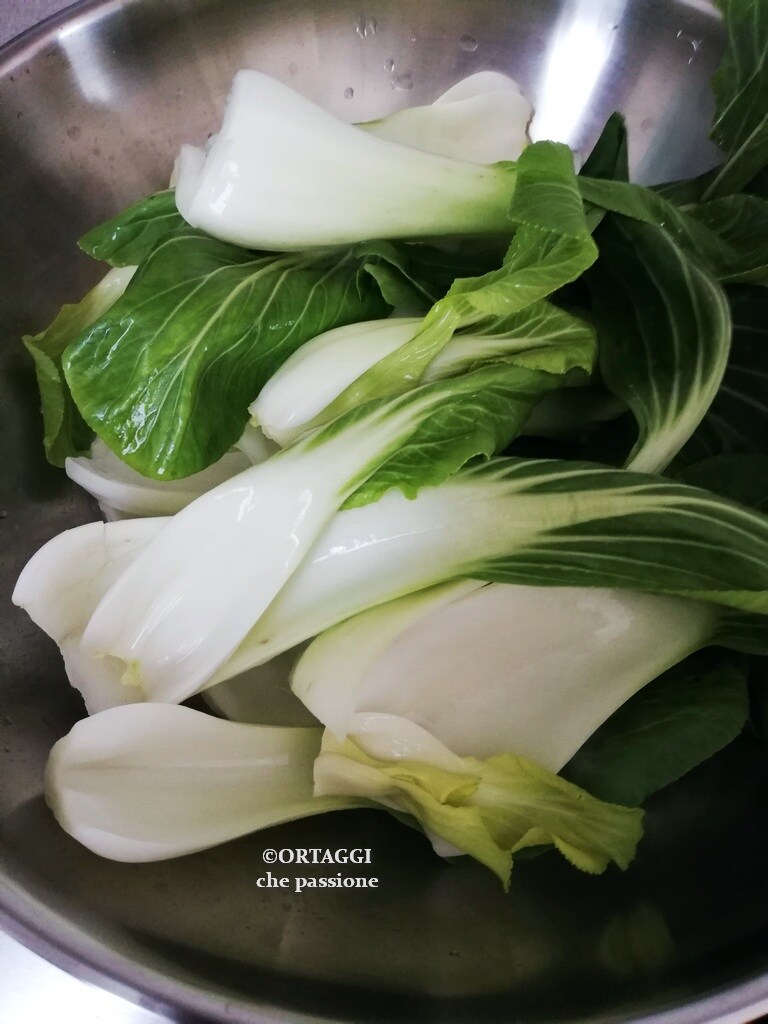
Continue cooking with the lid on, stirring occasionally. If necessary, add a drizzle of water or uncover to dry.
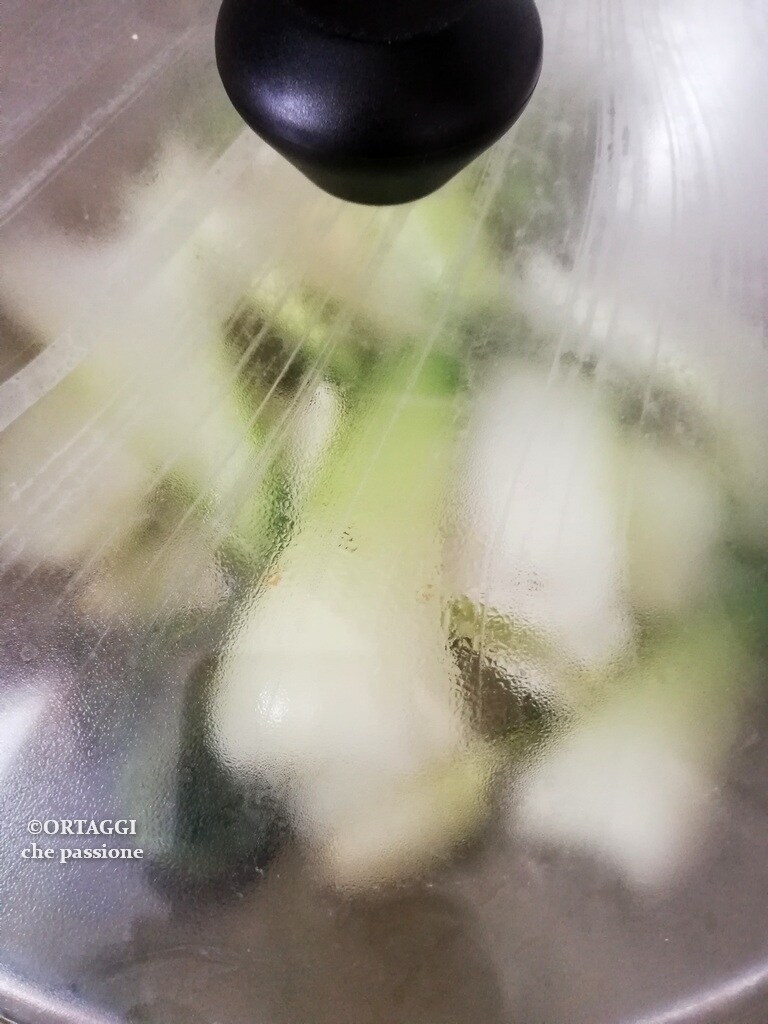
Cook until reaching the desired doneness.
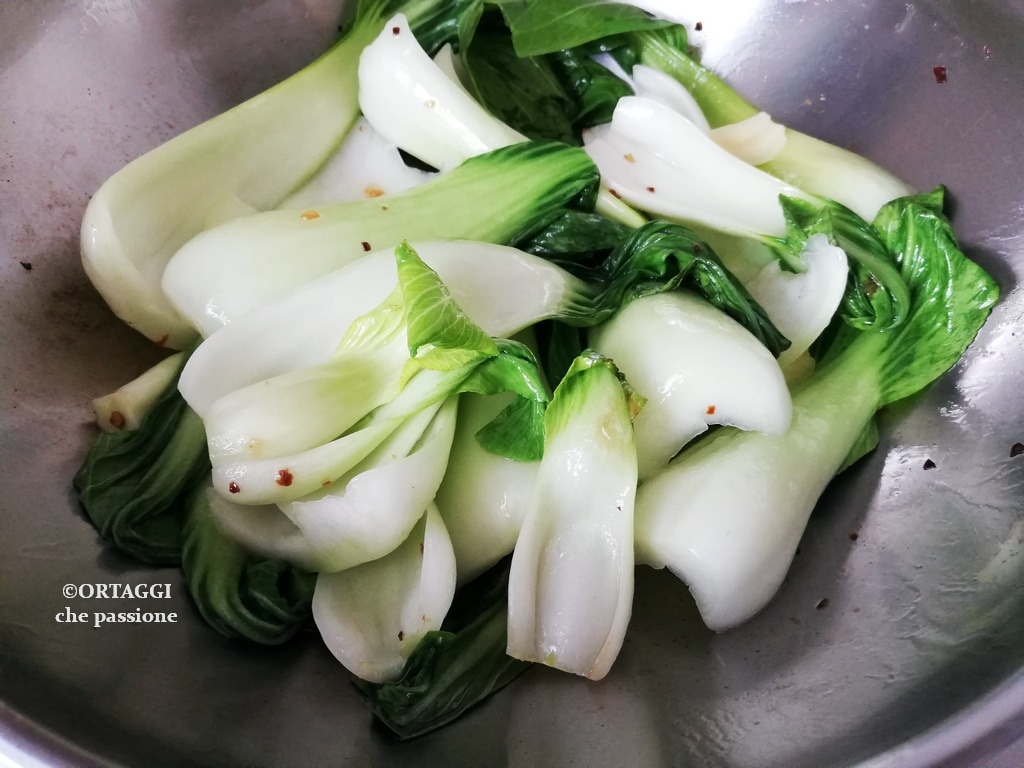
Heat a drizzle of oil in the pan, add sliced pak choi, season with salt and add your preferred herbs. Cover. Stir occasionally and cook until reaching the desired doneness. If necessary, add a drizzle of water or uncover to dry.
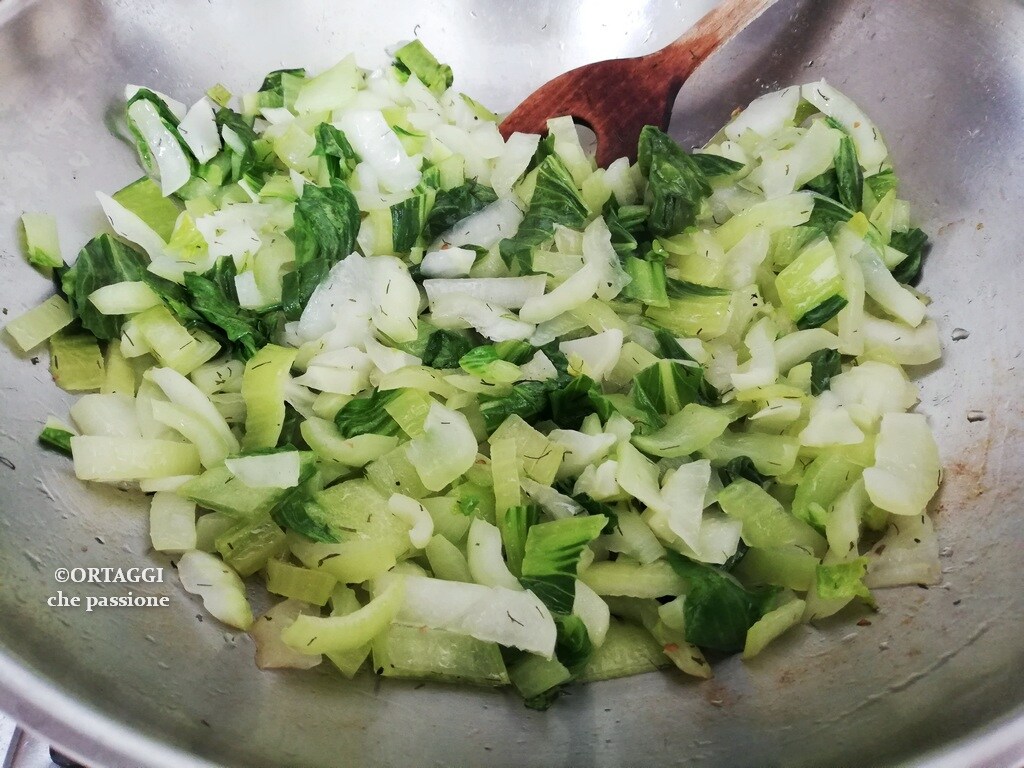
What to add to sautéed pak choi?
What to add to sautéed pak choi?
🍀 asparagus pieces halfway through cooking
🍀 sweet potato in small cubes at the beginning
🍀 broccoli in small florets halfway through cooking
🍀 thinly sliced carrots at the beginning
🍀 cauliflower in slices halfway through cooking
🍀 kale or curly kale (only the green part in strips)
🍀 sliced onions at the beginning
🍀 champignon mushrooms during cooking
🍀 halved cherry tomatoes at the end of cooking
🍀 leeks at the beginning
🍀 spinach towards the end
🍀 zucchini in rounds (or sticks) halfway through cooking
STORE cooked pak choi
After cooking the pak choi in the pan, let it cool. Then store it in an airtight container to avoid it absorbing odors. Keep in the refrigerator for up to 3 days.
If you want to keep it longer, you can freeze it, but the texture may change once thawed.
FAQ (Frequently Asked Questions)
How is pak choi eaten?
Pak choi is a versatile vegetable. It can be eaten raw in salads, boiled oriental style, blanched as a side dish, baked or added to soups for a crunchy touch. It can be steamed and dressed with sesame oil and soy sauce, or grilled with lemon and olive oil.
What goes well with pak choi?
Pak choi pairs well with dishes based on rice, noodles, or meat, or to flavor soups and stews. It can be accompanied by other crunchy vegetables or basmati rice for a light and tasty meal.
What is pak choi good for?
Pak choi is beneficial for health due to its high content of vitamins, minerals, and antioxidants. It helps to strengthen the immune system, improve digestion, and support bone health thanks to calcium and vitamin K.
Pak choi contraindications
Pak choi is generally safe, but in large quantities, it can cause bloating or flatulence in those sensitive to cruciferous vegetables. Additionally, those taking thyroid medications should consume it in moderation.

